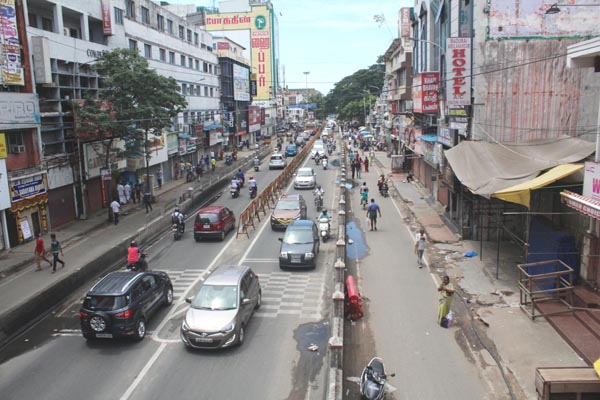-
Tips for becoming a good boxer - November 6, 2020
-
7 expert tips for making your hens night a memorable one - November 6, 2020
-
5 reasons to host your Christmas party on a cruise boat - November 6, 2020
-
What to do when you’re charged with a crime - November 6, 2020
-
Should you get one or multiple dogs? Here’s all you need to know - November 3, 2020
-
A Guide: How to Build Your Very Own Magic Mirror - February 14, 2019
-
Our Top Inspirational Baseball Stars - November 24, 2018
-
Five Tech Tools That Will Help You Turn Your Blog into a Business - November 24, 2018
-
How to Indulge on Vacation without Expanding Your Waist - November 9, 2018
-
5 Strategies for Businesses to Appeal to Today’s Increasingly Mobile-Crazed Customers - November 9, 2018
Tamil Nadu shutdown on water row peaceful
State transport corporation run buses, trains plied as usual, though most autorickshaws, taxis, private trucks and commercial freight operators chose to go off the roads.
Advertisement
Men ride a motorcycle past a lorry in Bengaluru, which was set on fire by protesters after India’s Supreme Court ordered Karnataka state to release 12,000 cubic feet of water per second every day from the Cauvery river to neighbouring Tamil Nadu, India September 12, 2016. Transport and other essential services remained unaffected. Most shops in the district, however, remained shut adhering to bandh call from trade organisations. In Coimbatore, senior leaders of various political parties, including DMK and MDMK and farmers associations were arrested while trying to stage rail roko near railway stations and road blockade. The bandh was largely peaceful in the Cauvery Delta.
DMDK leader Vijayakanth stayed away from the hunger strike organised by his party in Chennai due to health issues, though his wife Premalatha led the protest. About 20,000 small and medium scale units in and around Chennai and over 30,000 garment factories in the textile hub of Tirupur also extended support to the bandh and downed shutters, according to reports.
DMK leaders M K Stalin and Kanimozhi were among several leaders detained on Friday while staging protests in support of the shutdown that evoked a mixed response in the state. Expressing its anguish over the incidents, the Commission, in a hard hitting statement today has observed that it appears from the National Television channels that civil and police authorities in both Karnataka and Tamil Nadu remained mere onlookers and took no advance steps to stop the hooligans indulging in such illegal acts who played with life and liberty of the people, the NHRC said in a statement.
MDMK leader Vaiko with about 200 cadres carried out a rail roko at Trichy junction. Auto-rikshaws and taxis were also available in the district.
The BJP workers took out a procession and raised slogans, condemning the attack on Tamils in Karnataka and staged a picketing near the bus stand.
Meanwhile Tamil Nadu Chief Minister J.Jayalalithaa announced release of water from Mettur Dam for Samba rice cultivation.
Flagging the “extreme unrest” in Karnataka over the release of Cauvery water to Tamil Nadu, Chief Minister Siddaramaiah had on September 9 dashed off a missive requesting Modi to call forthwith “on a few hours notice” a meeting of Chief Ministers of the two states to end the impasse.
Advertisement
Since the Centre has not constituted these, “We are in a situation of approaching the Supreme Court to receive our share of water from Cauvery”, she said, reported PTI. Hoping for further release of water from Karnataka as per apex court orders and expected water release order from Cauvery Supervisory Committee, Jayalalithaa said water from Mettur Dam is being released.





























